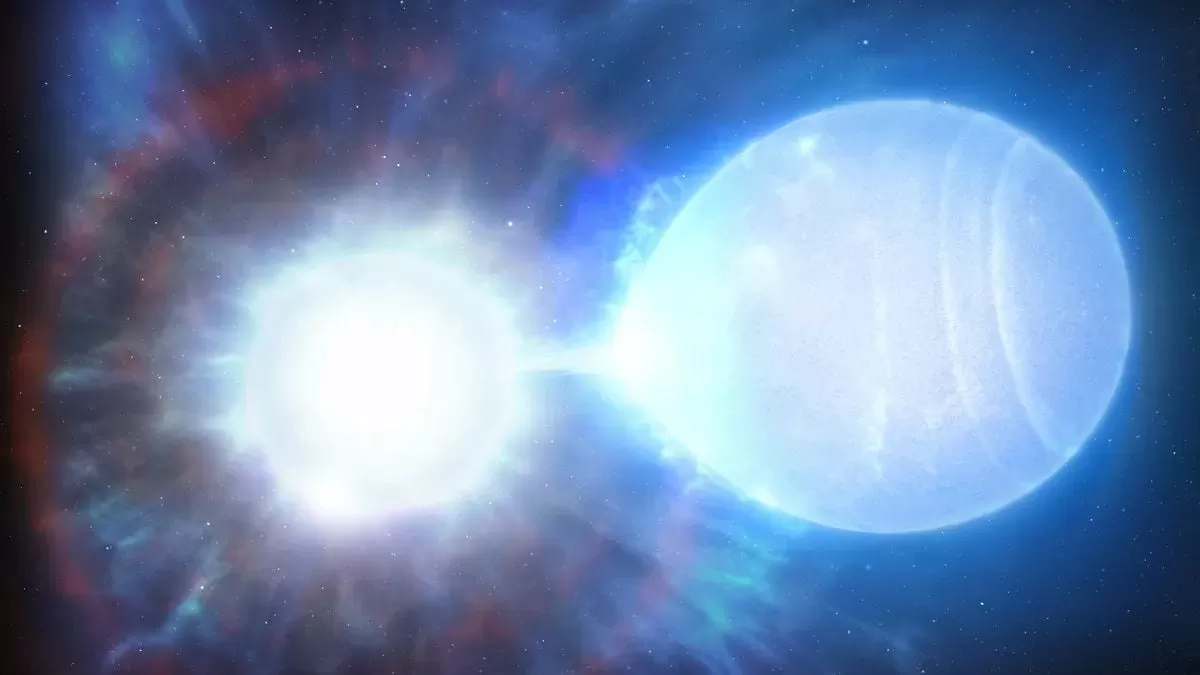Astronomers have made an exciting discovery that could have a major impact on our understanding of the universe. A pair of white dwarf stars, located about 150 light-years from Earth, have been found to be on a collision course. This collision is predicted to produce a Type 1a supernova, a rare and powerful event that has never been observed in our region of the galaxy before.
The two stars, with a combined mass of 1.56 solar masses, are slowly spiralling towards each other in a dance that has been ongoing for billions of years. This delicate balance is set to be disrupted as the stars get closer and closer, eventually resulting in a cataclysmic explosion that will be visible from Earth.
This discovery was made by a team of astronomers using the European Southern Observatory’s Very Large Telescope (VLT) in Chile. The VLT is one of the most advanced telescopes in the world, equipped with state-of-the-art instruments that allow scientists to observe the universe in unprecedented detail.
The team was studying a group of stars in the constellation of Centaurus when they noticed something unusual. Two stars, known as SDSS J1240+6710, were found to be orbiting each other in a way that is characteristic of white dwarf stars. White dwarfs are the remnants of stars that have run out of fuel and collapsed, becoming incredibly dense and hot. They are about the size of Earth but can have a mass equivalent to that of our Sun.
What makes this discovery so significant is that these two white dwarfs are on a collision course. This is the first time that such a system has been identified in our region of the galaxy, and it is estimated that the collision will occur in approximately 23 billion years. While this may seem like a long time, in astronomical terms, it is just around the corner.
The collision of these two stars will result in a Type 1a supernova, a powerful explosion that occurs when a white dwarf star reaches a critical mass. This type of supernova is essential in helping scientists understand the expansion of the universe and has been used to measure distances to faraway galaxies. However, the exact mechanism behind this type of explosion is still not fully understood, and this discovery could provide valuable insights.
Dr. David Jones, lead author of the study, explains, “This is an incredibly rare and exciting discovery. These two stars have been dancing around each other for billions of years, and now we have a front-row seat to witness their final act. This is a unique opportunity to study a Type 1a supernova up close and gain a better understanding of the processes that lead to these powerful explosions.”
The discovery of this pair of white dwarf stars also has implications for our understanding of the evolution of stars and the fate of our own Sun. As stars age, they eventually run out of fuel and collapse, becoming white dwarfs. The fact that these two stars are on a collision course suggests that this is a common occurrence in the universe, and our own Sun could potentially meet a similar fate in the distant future.
The team plans to continue observing these two stars as they get closer and closer, using the VLT and other telescopes to gather as much data as possible before the collision occurs. This will provide a unique opportunity to study the explosion in detail and gain a better understanding of the processes that lead to a Type 1a supernova.
The discovery of this pair of white dwarf stars is a testament to the power of modern technology and the dedication of astronomers to unravel the mysteries of the universe. It is a reminder that there is still so much we have yet to discover and that the universe is full of surprises waiting to be uncovered.
As we eagerly await the collision of these two stars, we can only imagine the spectacular show that will unfold in the distant future. This discovery is a reminder of the beauty and complexity of the universe and the endless possibilities that await us in the vastness of space.

